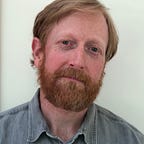A New Framework for Sustainable Development
It is probably an understatement to say that the Coronavirus pandemic, especially in the United States, has shaken the most seemingly solid pillars of 21st century life. This disruption is most apparent in the use of our buildings and the patterns of life in our cities. As professionals working at the intersection of physical space, technology, and organizational design, we’ve naturally gravitated toward the intertwined discussions about the future of work and the future of cities.
From our homes to our offices, we need to discuss and debate how today’s social habits will and should shape our developments of tomorrow. Through these discussions we see an opportunity to emerge from this disruption with a renewed framework for understanding settlements and organizations — one that breaks down old dichotomies between centralization and dispersion, between density and sprawl, and tells a story of a more distributed, connected, and resource-efficient future.
One key argument that we will pursue is that the industrial-era consolidation of populations around fewer “mega” urban agglomerations is now slowing, if not unwinding, resulting in a redistribution of both population and economic opportunity, and that this process is being accelerated by the recent Coronavirus pandemic. This could have a profound impact on our natural environment as we reverse the progress toward higher population-density as a driver of sustainable development and toward larger and larger cities as drivers of economic growth.
Our view, however, is that a policy of resistance and regulation that attempts to limit geographic expansion and “de-densification” has not and will not overcome the “centrifugal” forces of the market and the desires of people. The path forward will be one in which, like a martial artist, we accept this energy and direct it. We must start by unpacking our assumptions about proximity and density, and laying out an approach that evaluates a settlement’s fitness as a function of connection to economic opportunity and overall resource consumption.
We are not arguing against large cities or against density. Population and density have been shown to be highly correlated with innovation and wealth creation, as well as contributors to more sustainable economies of scale. However, these measures create a linear continuum that pits city centers against their less dense and more sparsely populated suburbs and hinterlands. We would like to advocate for the development of more inclusive measures that illuminate the potential health and vitality of smaller settlements that could become nodes in broader geographic networks of innovation and do not rely on long commutes to move labor to opportunity.
The concept and measures of “connectivity” are helpful here to look at the ways in which information, money, services, products, and people flow among spatially-distributed organizations and settlements. This could be the relative connectedness of companies made up of workers working both face-to-face or remotely, as practicality dictates. Or it could be the connectedness of low-income communities to more resilient and accessible healthcare networks. Or it could be the symbiotic economic and civic connections among regional towns and villages.
In particular, we believe that the post-Covid redistribution of people, business, and economic opportunity will foster the creation of new connections in networks of communities and settlements. Links will be created as local and regional economies evolve, create new goods and services, and enter new relationships of exchange with other nodes and larger hubs. But these settlements will also find ways to be more independent and autonomous, perhaps as self-sufficient producers of renewable energy or as the birthplaces of new ideas and products. This new era is about more than “remote work,” it’s about a new distribution of talent, capital, and innovation — not just “work from anywhere,” but “opportunity anywhere.”
This introduction is unavoidably reductive and there are difficult questions to answer. The pandemic has also exposed the fragility of our healthcare infrastructure and the vulnerability of under-served communities. So how does opportunity get distributed equitably in this new paradigm? How will already distressed cities, towns, and communities provide services to a population that reversed course from shrinking to growing?
We’re launching Network Communities to create a forum for discussion and a framework for understanding the impact of our network economy on the built environment. We will use the creative and analytical tools of architectural, environmental, and urban design, as well as economics and network theory, to investigate the future of distributed, sustainable communities across multiple scales, from workplaces and organizations to small towns, cities, and regions.
If this sounds interesting, follow us here and stay tuned. We’d also love to hear what others think about this topic, and we welcome friendly, healthy debate, if you don’t quite agree with our views.
—
Network Communities is jointly-authored and edited by Nash Hurley and Josh Emig.
Fifteen years ago, Josh and Nash met while working together at SHoP Architects. Since then they have worked independently, leading design, product development, and research initiatives to power flexible work environments, foster community, and enable effective distributed teams. Nash is the founder and principal at researched-based architecture practice Vital, based in San Francisco. Josh is an independent consultant working on multiple projects to help companies think about and deliver innovative products in the built environment.
